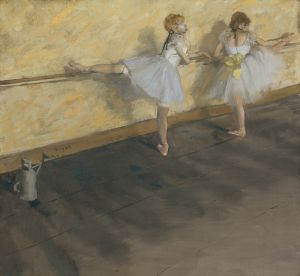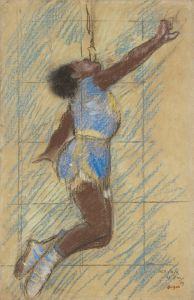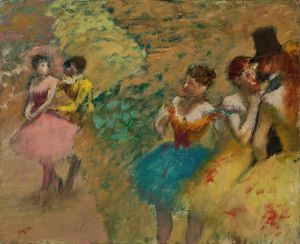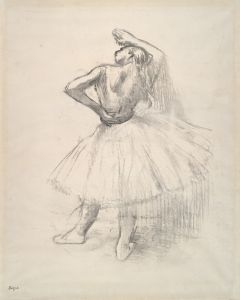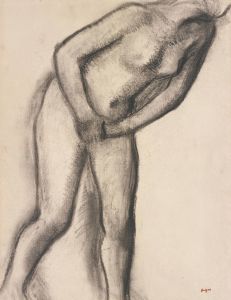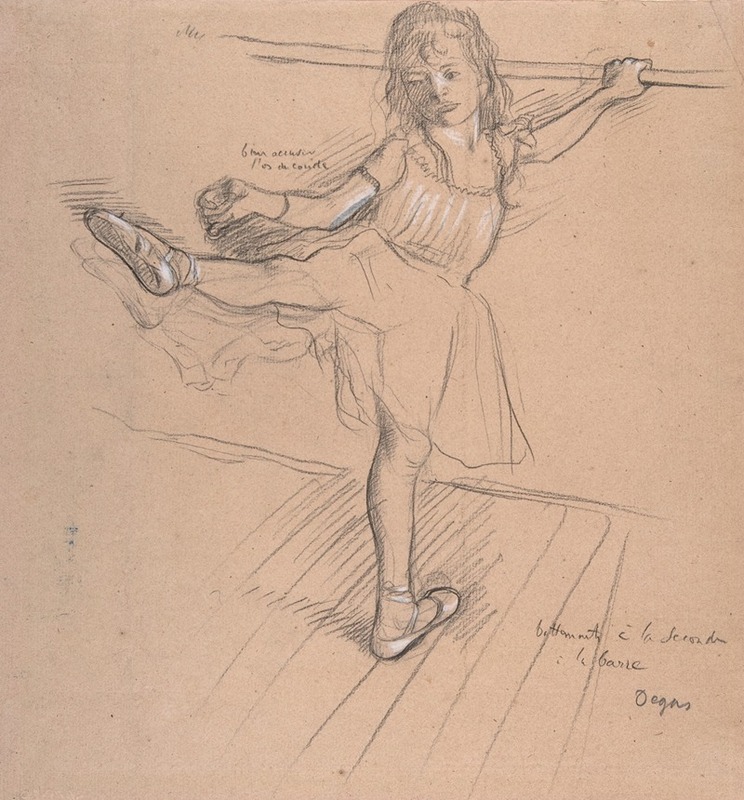
Little Girl Practicing at the Bar
A hand-painted replica of Edgar Degas’s masterpiece Little Girl Practicing at the Bar, meticulously crafted by professional artists to capture the true essence of the original. Each piece is created with museum-quality canvas and rare mineral pigments, carefully painted by experienced artists with delicate brushstrokes and rich, layered colors to perfectly recreate the texture of the original artwork. Unlike machine-printed reproductions, this hand-painted version brings the painting to life, infused with the artist’s emotions and skill in every stroke. Whether for personal collection or home decoration, it instantly elevates the artistic atmosphere of any space.
Edgar Degas, a prominent French artist associated with the Impressionist movement, is renowned for his works that capture the nuances of modern life, particularly focusing on dancers. One of his notable works is "Little Girl Practicing at the Bar." This painting exemplifies Degas's fascination with the world of ballet, a recurring theme in his oeuvre.
Degas was born on July 19, 1834, in Paris, France, and he developed a keen interest in art from an early age. He studied at the École des Beaux-Arts in Paris and spent time in Italy, where he was influenced by the classical art of the Renaissance. However, it was his return to Paris and his interaction with contemporary artists that steered him towards the Impressionist movement, although he preferred to be called a Realist.
"Little Girl Practicing at the Bar" is a testament to Degas's ability to capture the grace and discipline of ballet dancers. The painting depicts a young girl at a ballet bar, practicing her moves with concentration and dedication. Degas's choice of subject reflects his interest in the behind-the-scenes world of ballet, focusing on the hard work and practice that precede the performance.
Degas's technique in this painting is notable for its use of light and shadow, as well as his attention to detail. He often used pastels, a medium that allowed him to achieve a softness and vibrancy in his work. This technique is evident in the delicate rendering of the girl's form and the subtle play of light on her figure. The composition is carefully balanced, with the bar providing a horizontal anchor that contrasts with the vertical lines of the girl's posture.
The painting is also significant for its portrayal of movement and stillness. Degas was adept at capturing fleeting moments, and in "Little Girl Practicing at the Bar," he conveys the tension between the dancer's poised stance and the potential for movement. This dynamic quality is a hallmark of Degas's work, reflecting his interest in the human body's ability to convey emotion and narrative through posture and gesture.
Degas's focus on dancers was not merely aesthetic; it also reflected his interest in the social and cultural aspects of ballet. During the late 19th century, ballet was both a popular entertainment and a subject of social commentary. Dancers often came from working-class backgrounds and were subject to the patronage of wealthy individuals. Degas's paintings, therefore, offer a glimpse into the lives of these performers, highlighting both their artistry and their social milieu.
"Little Girl Practicing at the Bar" is part of a larger body of work by Degas that explores the theme of dance. His paintings, pastels, and sculptures of dancers are celebrated for their technical mastery and their insight into the world of ballet. Degas's work continues to be studied and admired for its innovative approach to composition, use of color, and ability to capture the essence of movement.
In summary, Edgar Degas's "Little Girl Practicing at the Bar" is a quintessential example of his artistic focus on ballet dancers. Through his skilled use of pastels and his keen observation of human form and movement, Degas created a work that is both a study of a dancer's discipline and a reflection of the cultural context of ballet in 19th-century France.









